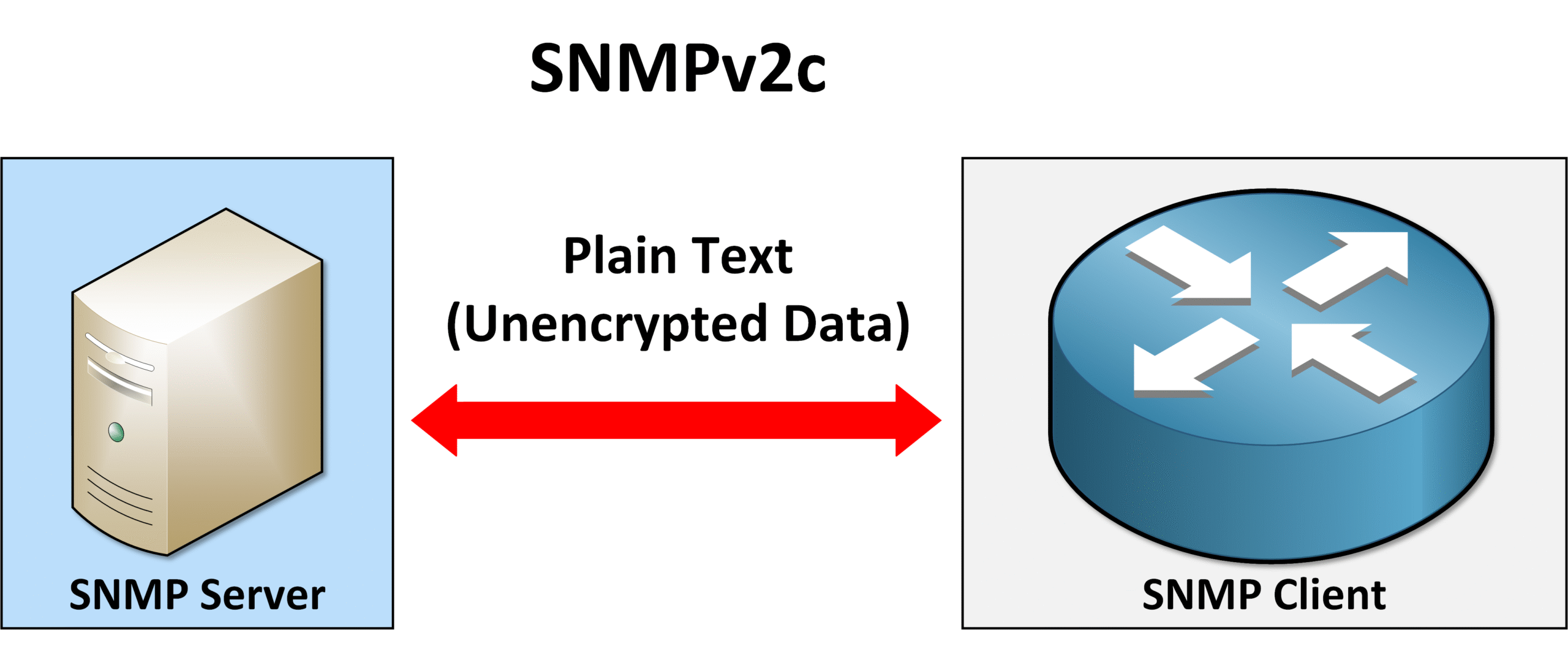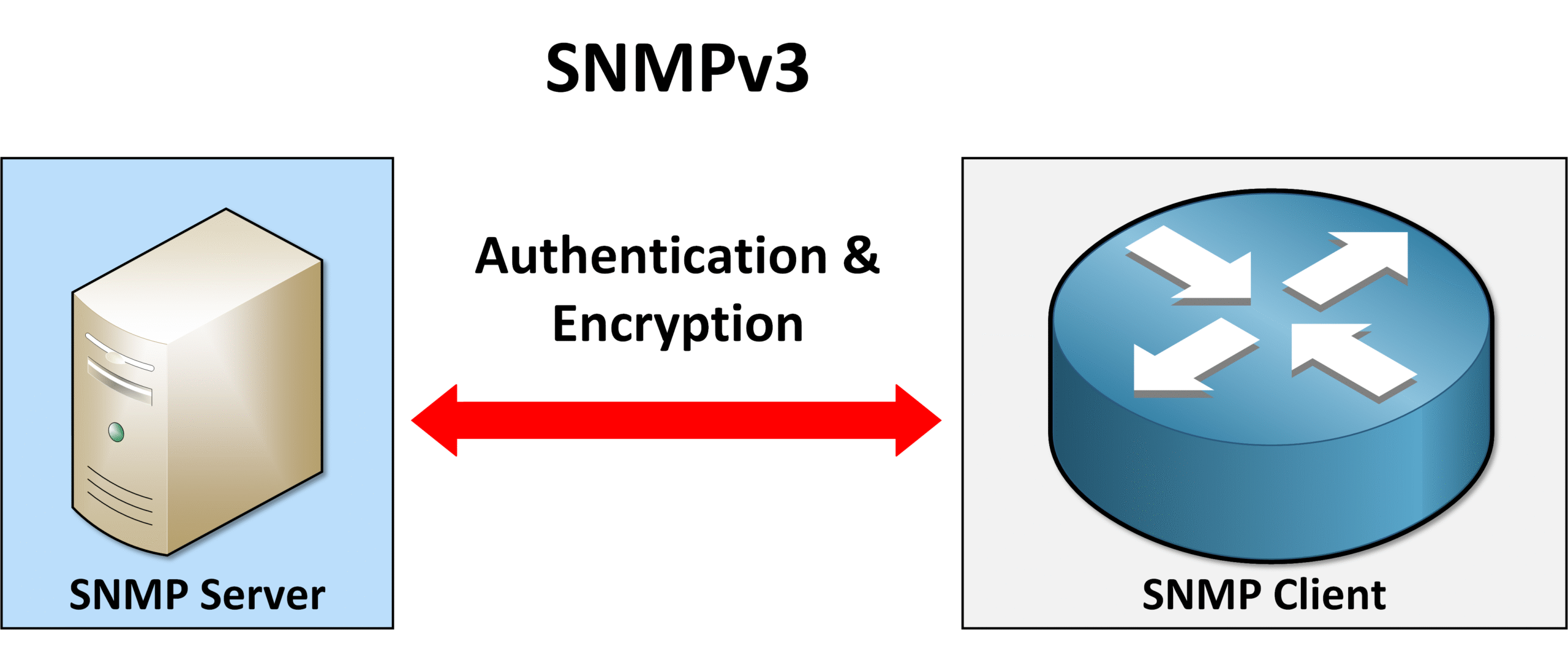SNMPv2c lacks security.
Community strings in SNMPv2c are transmitted in plain text, making them vulnerable to interception.
SNMPv3 was introduced to address these security concerns by adding robust mechanisms for authentication, encryption, and access control.

Figure 1 – SNMPv2c Transmits Data in Plain Text
Key reasons for using SNMPv3:
Protecting Sensitive Data: Prevents unauthorized access to monitoring and configuration data.
Ensuring Data Integrity: Verifies that data has not been altered during transmission.
User Authentication: Confirms that SNMP messages come from legitimate sources.

Figure 2 – SNMPv3 Provides Authentication and Encryption
Key Features of SNMPv3
SNMPv3 focuses on security and flexibility with these core features:
Authentication: Verifies the identity of devices accessing SNMP data.
Encryption: Protects SNMP data from unauthorized access during transmission.
Access Control: Restricts who can access specific SNMP information.
Answer the question below
SNMPv3 offers three distinct security levels designed to balance security and performance. These levels noAuthNoPriv, authNoPriv, and authPriv determine the extent of authentication and encryption applied to SNMP communication.
40 % Complete: you’re making great progress
Unlock the rest of this lesson
If you’d like to continue your CCNA journey, simply create your free account.
Access all CCNA lessons
Practice with hands-on labs
Train with Practice exams and Quizzes
Progress tracking in your dashboard
Made by network engineers - CCNP certified
learners globally
SNMPv3
SNMPv3 is the most secure version of the Simple Network Management Protocol, adding authentication, encryption, and access control to protect sensitive data. This lesson explains its security levels, key features, and why it is the preferred choice in modern networks.